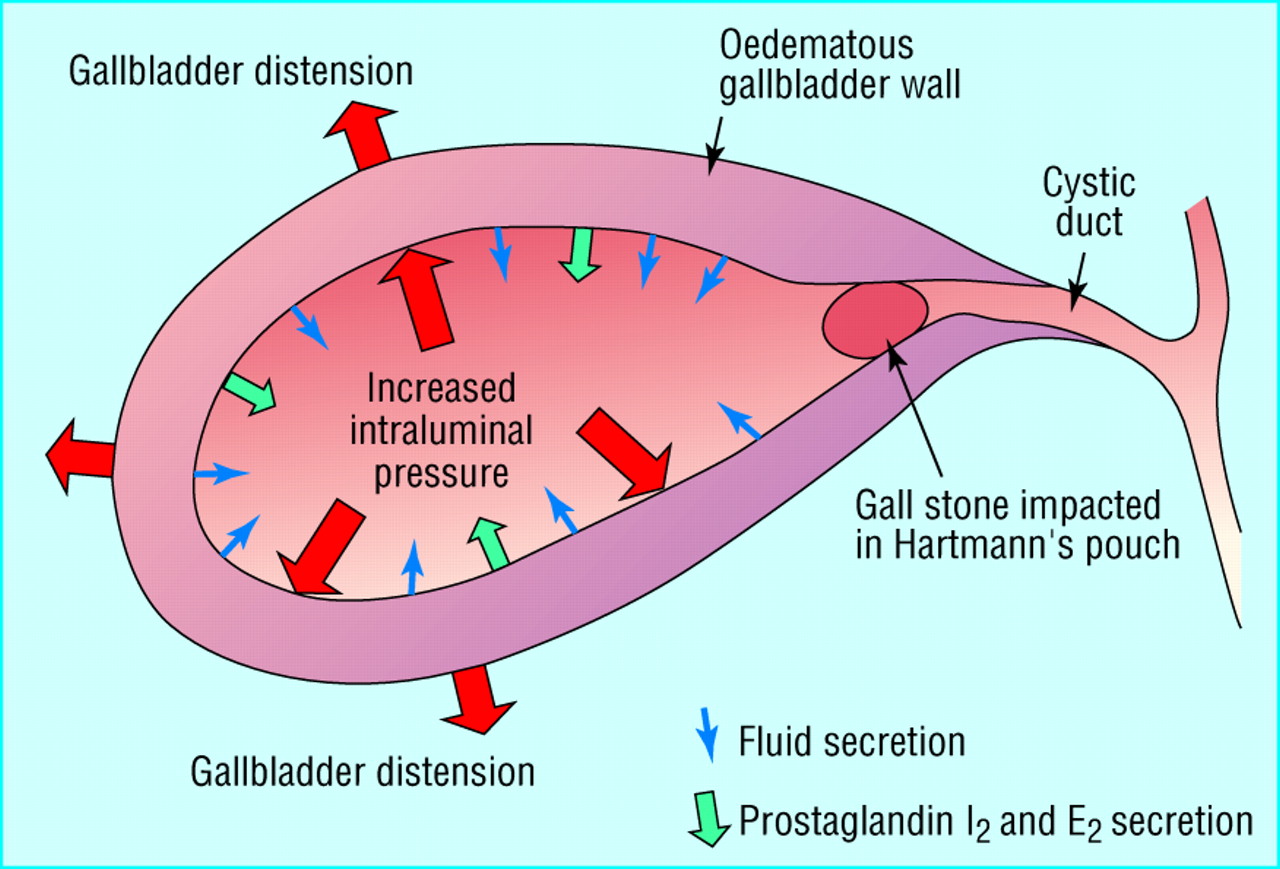Makindo Medical Notes"One small step for man, one large step for Makindo" |
|
|---|---|
| Download all this content in the Apps now Android App and Apple iPhone/Pad App | |
| MEDICAL DISCLAIMER: The contents are under continuing development and improvements and despite all efforts may contain errors of omission or fact. This is not to be used for the assessment, diagnosis, or management of patients. It should not be regarded as medical advice by healthcare workers or laypeople. It is for educational purposes only. Please adhere to your local protocols. Use the BNF for drug information. If you are unwell please seek urgent healthcare advice. If you do not accept this then please do not use the website. Makindo Ltd. |
Cholecystitis
-
| About | Anaesthetics and Critical Care | Anatomy | Biochemistry | Cardiology | Clinical Cases | CompSci | Crib | Dermatology | Differentials | Drugs | ENT | Electrocardiogram | Embryology | Emergency Medicine | Endocrinology | Ethics | Foundation Doctors | Gastroenterology | General Information | General Practice | Genetics | Geriatric Medicine | Guidelines | Haematology | Hepatology | Immunology | Infectious Diseases | Infographic | Investigations | Lists | Microbiology | Miscellaneous | Nephrology | Neuroanatomy | Neurology | Nutrition | OSCE | Obstetrics Gynaecology | Oncology | Ophthalmology | Oral Medicine and Dentistry | Paediatrics | Palliative | Pathology | Pharmacology | Physiology | Procedures | Psychiatry | Radiology | Respiratory | Resuscitation | Rheumatology | Statistics and Research | Stroke | Surgery | Toxicology | Trauma and Orthopaedics | Twitter | Urology
Related Subjects:Acute Cholecystitis |Acute Appendicitis |Chronic Peritonitis |Abdominal Aortic Aneurysm |Ectopic Pregnancy |Acute Cholangitis |Acute Abdominal Pain/Peritonitis |Assessing Abdominal Pain |Penetrating Abdominal Trauma |Acute Pancreatitis |Acute Diverticulitis
⚠️ Mortality: Acute calculous cholecystitis has a mortality of <10% with prompt treatment. However, 🔥 Acute Acalculous Cholecystitis (more common in the critically ill) carries a mortality rate of up to 50% 🚨 and requires urgent recognition and intervention.
| 🩺 Initial Management Summary |
|---|
|
ℹ️ About
- 📊 Prevalence: Gallstones affect ~10% of the population; 10–20% become symptomatic.
- 🧪 Pathophysiology: Gallstone obstructs cystic duct → ↑ pressure, bile stasis, gallbladder wall inflammation.
- 👩 Demographics: More common in women; incidence rises with age (♀24%, ♂15% by age 70).
- 🔪 Treatment: Symptomatic patients usually require laparoscopic cholecystectomy after excluding CBD stones.

🧪 Aetiology
- 💧 Lithogenic bile: ↑ cholesterol, ↓ bile salts → stone formation.
- 🚪 Cystic duct obstruction: Main trigger → inflammation.
- 🦠 Secondary infection: Often E. coli, Klebsiella, Enterococcus.
- ⚠️ Empyema: Severe complication = pus-filled gallbladder needing urgent surgery.
⚠️ Risk Factors
- 👵 Age >50, 👩 Female, Caucasian
- 🍔 Obesity, rapid weight loss, diabetes, metabolic syndrome
- 🧬 Crohn’s (terminal ileal disease), cholestyramine therapy
- 🤰 Pregnancy, cystic fibrosis
💎 Types of Gallstones
| Type | Description | Incidence |
|---|---|---|
| ⚪ Mixed | Cholesterol + bile salts + calcium; most common. | 70% |
| 🟡 Cholesterol | Solitary; linked with hyperlipidaemia, pregnancy; “strawberry gallbladder”. | 20% |
| ⚫ Pigment | Dark; associated with haemolysis (e.g. sickle cell). | 5% |
| 🟤 Brown | Linked with infection (e.g. Clonorchis) – rare in UK. | Rare |
🩺 Clinical Features
- ⚡ Typical: Sudden, severe RUQ pain → radiates to right shoulder/scapula.
- 🤮 Nausea, vomiting, anorexia, fever.
- 🖐️ Murphy’s Sign: Arrest of inspiration on RUQ palpation → highly suggestive.
- 🟡 Jaundice: Consider CBD stone or cholangitis.
🔎 Investigations
- 🧪 Bloods: Leukocytosis, ↑ CRP, mildly deranged LFTs. ↑ bilirubin = CBD involvement.
- 🖥️ USS: 1st-line → gallstones, wall thickening, pericholecystic fluid, sonographic Murphy’s sign.
- 🩻 CT: For complications (abscess, perforation).
- 💿 MRCP: Best for CBD stones.
- 🛠️ ERCP: Diagnostic + therapeutic → CBD stone extraction.
📐 Calot’s Triangle: Bound by cystic duct, common hepatic duct, cystic artery. Must be clearly identified during laparoscopic cholecystectomy to avoid bile duct injury.
🚨 Complications
| Complication | Presentation | Management |
|---|---|---|
| 🌪️ Biliary Colic | RUQ pain post-fatty meal, <2 hrs | Analgesia, elective cholecystectomy if recurrent |
| 🔥 Acute Calculous Cholecystitis | RUQ pain, fever, +Murphy’s | Admit, IV fluids/antibiotics, early cholecystectomy |
| 🟡 Ascending Cholangitis | Charcot’s triad = jaundice, fever, RUQ pain | IV antibiotics, ERCP drainage → surgery |
| 🫀 Gallstone Pancreatitis | Epigastric pain → back, ↑ amylase | ERCP if CBD stone, cholecystectomy within 3 weeks |
| 🧴 Empyema | Pus-filled gallbladder, sepsis | Drainage + urgent cholecystectomy |
| 🔒 Mirizzi Syndrome | Stone compresses CBD → jaundice | Surgery |
🎭 Differentials
- Peptic ulcer disease, liver abscess
- Acute pancreatitis
- MI (atypical epigastric pain), pneumonia (referred pain)
💊 Management
- 💉 Analgesia (e.g. IV morphine), NBM.
- 🧪 IV antibiotics (cefuroxime + metronidazole / per protocol).
- 🔪 Laparoscopic cholecystectomy = definitive treatment (within 5 days ideally).
- ⏳ Delayed cholecystectomy (≈6 wks) if high-risk or unstable.
- 🛠️ ERCP for CBD stones before surgery.
📚 References
Case – Acute cholecystitis
A 46-year-old woman presents with right upper quadrant pain radiating to the back, fever, and nausea after a fatty meal. She is tender with a positive Murphy’s sign; WBC and CRP are raised, LFTs largely normal or mildly cholestatic. Bedside US shows gallstones, gallbladder wall thickening, and pericholecystic fluid. Diagnose acute calculous cholecystitis. Manage with ABCDE, IV fluids, analgesia, keep NBM, and start IV antibiotics per local policy (e.g., co-amoxiclav or cefuroxime + metronidazole in penicillin allergy). Plan early laparoscopic cholecystectomy (ideally within 24–72 h); if unfit or severe sepsis, consider percutaneous cholecystostomy. Watch for complications: empyema, gangrene/perforation, and bile duct stones; differentials include biliary colic, ascending cholangitis (fever, jaundice), and gallstone pancreatitis (↑amylase/lipase).